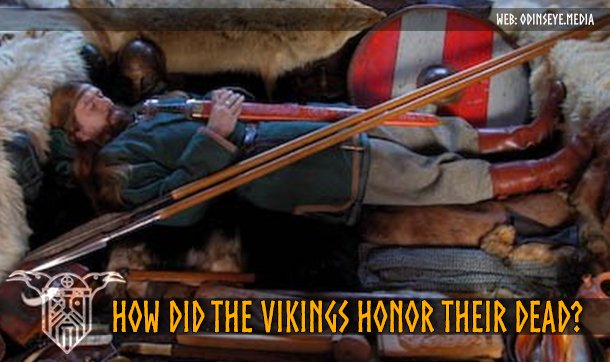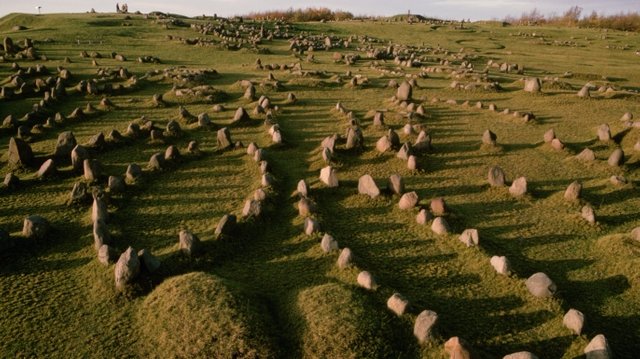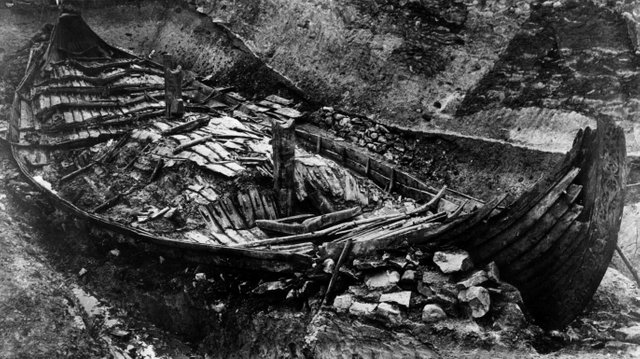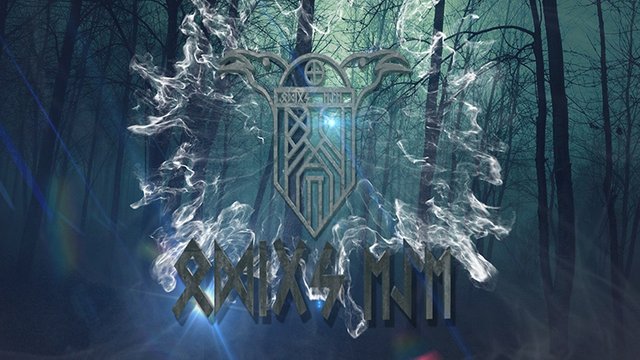How Did The Vikings Honor Their Dead?

How did they honor their dead? Nailing down the exact rituals of Viking funerals is difficult, as they kept few written accounts of their lives and deaths, but thanks to a few remaining accounts, and archaeological remains that have been found throughout much of Europe, it’s possible to resurrect some of their funeral traditions.

Most Vikings were sent to the afterlife in one of two ways—cremation or burial.
Cremation (often upon a funeral pyre) was particularly common among the earliest Vikings, who were fiercely pagan and believed the fire’s smoke would help carry the deceased to their afterlife. Once cremated, the remains also might be buried, usually in an urn.
For both cremated remains and bodies, burial locations ranged widely, from shallowly-dug graves (often used for women and children) to burial mounds that could hold multiple bodies and groupings of mounds or “grave fields” that served much the same role as cemeteries.

In Norse mythology, boats symbolized safe passage into the afterlife on the same vessel that aided their travels in life, so they played a key role in funeral rites. Some grave mounds were built to resemble ships, with stones used to outline the vessel’s shape. For other high-ranked Norsemen, the honors went a step further, and they were buried with their actual boats.
But these types of elaborate boat funerals weren’t reserved for just men. One of the most extravagant boat burials honored two women, who likely died around 834 A.D. Known as the “Oseberg ship,” it’s one of the most well persevered Viking artifacts. While the Vikings were known for the craftsmanship that went into their vessels in general, the size and detail of the Oseberg was exceptional. Seventy feet long and nearly 17 feet wide, the ship had 15 oars on each side, a pine mast more than 30 feet high, and was spacious enough to fit 30 people.

But contrary to popular belief, funeral boats were rarely sent out to sea, likely because the cost of building these legendary longboats was prohibitive. So it’s unlikely that there were many ships that were set sail and then set ablaze by fiery arrows shot from the shores.
Regardless of how the body was disposed of, a few rituals remained almost constant. The body was draped in new clothes prepared specifically for the funeral, and a ceremony was held featuring songs, chants, food and alcohol. Tributes and gifts, known as “grave goods” and usually of equal value to the deceased’s status, were buried or burned along with the recipient. ...
Also read: Scottish school children give goldfish traditional Viking funeral
Also read: Researchers Wonder if Rich Viking Boat Burial Found in Scotland was Made for a Warrior Woman
Also read: Arabic sources describe the Vikings as beautiful but filthy
Also read: Iron-age Viking longhouses were burned and buried in funerals
Further reading and sources

Amazing story!Thank you for sharing.
About the Oseberg ship.
There is built a replica, exact copy, built with the same tools that was available a 1000 years ago:
http://www.osebergvikingskip.no/eng/documents/reconstruction.html